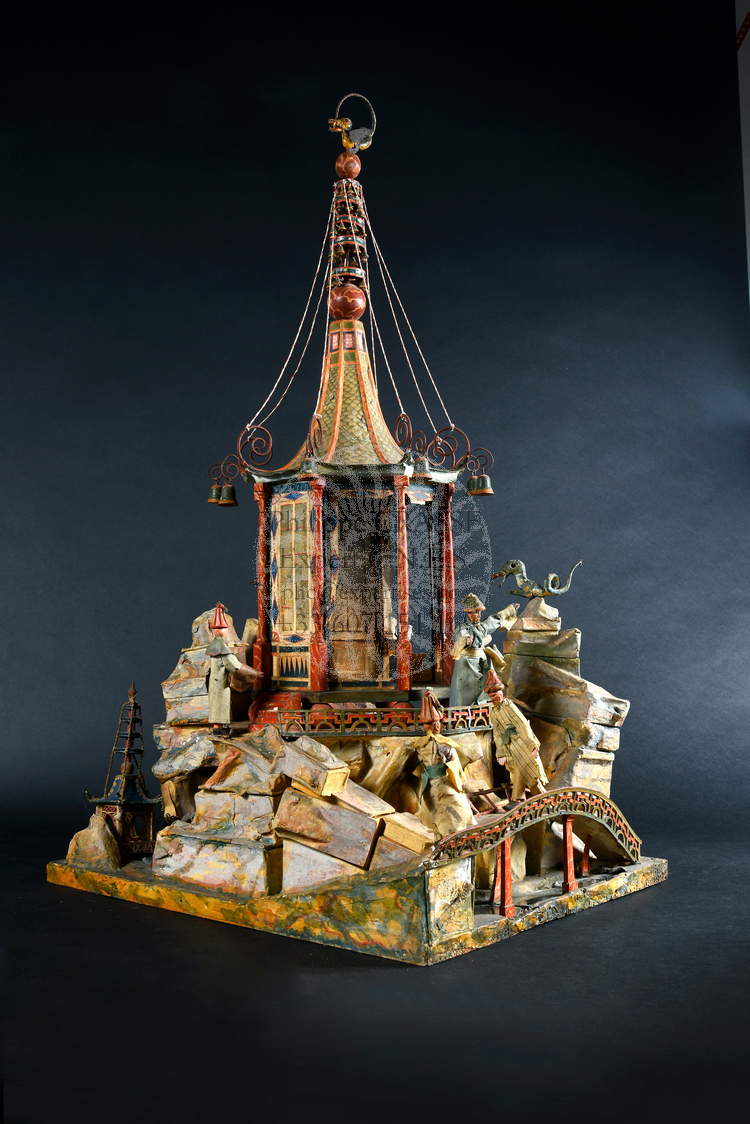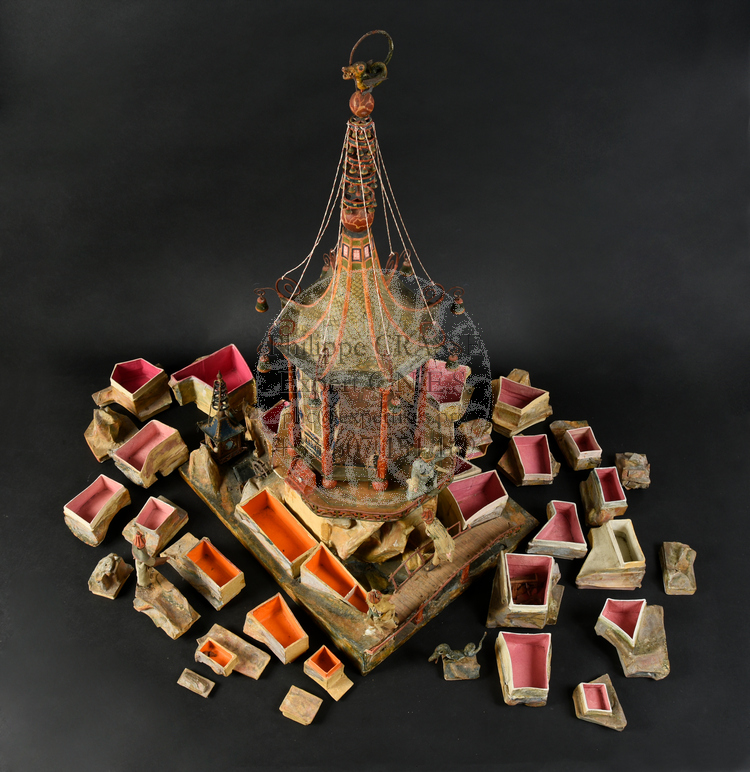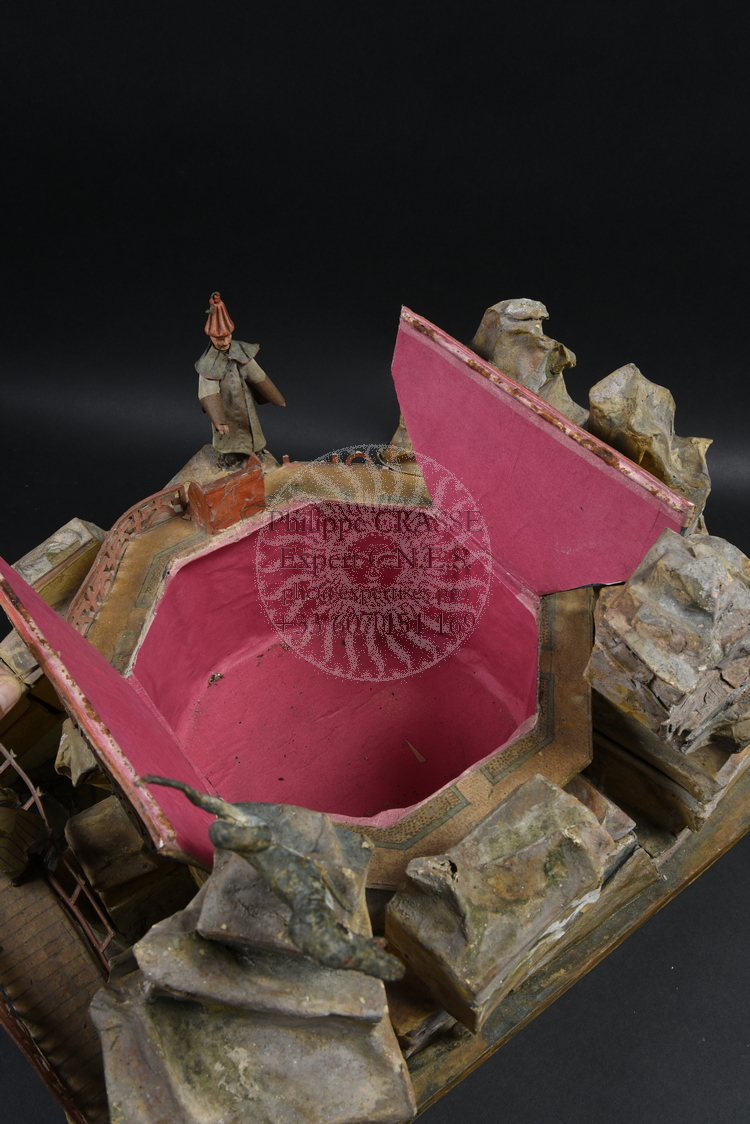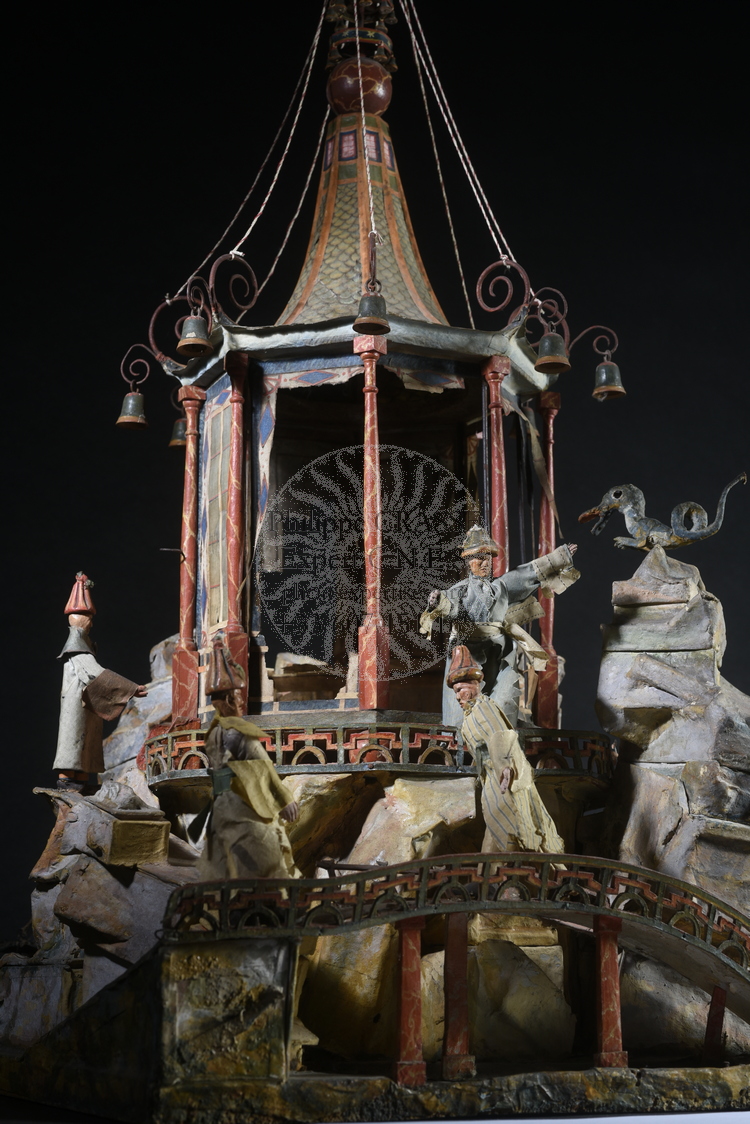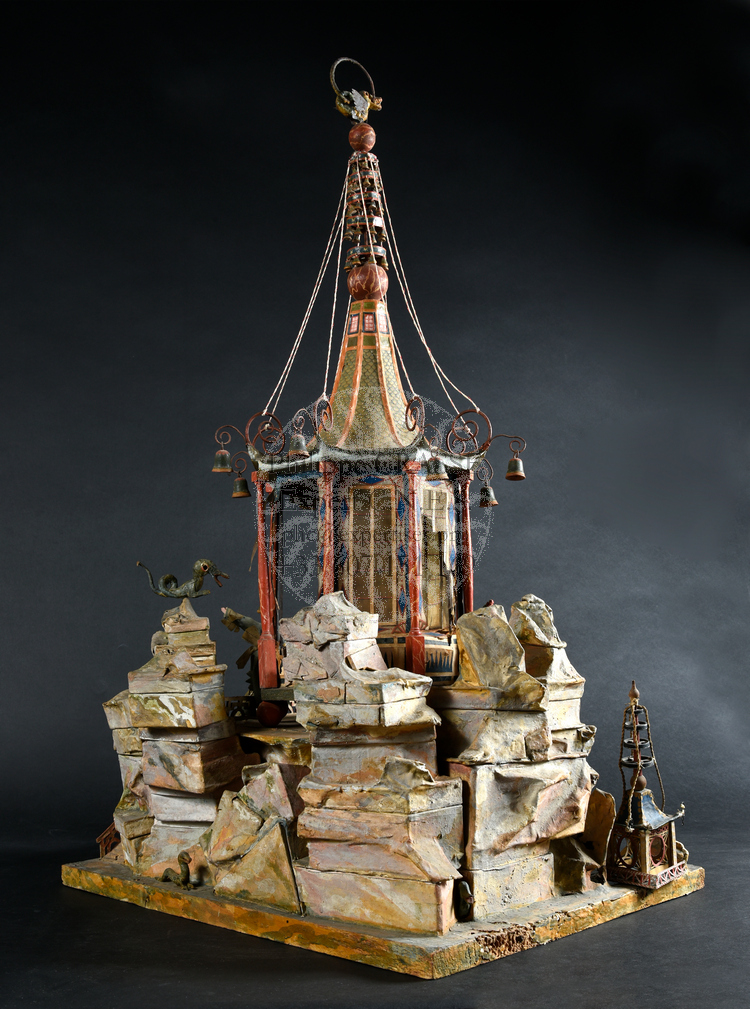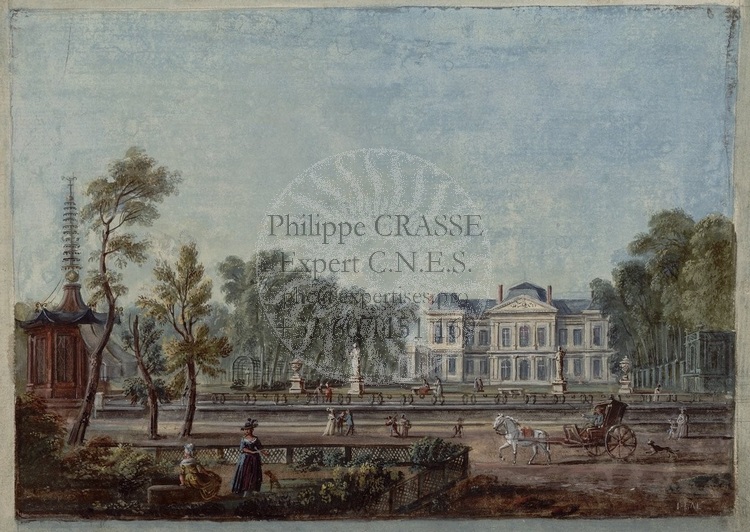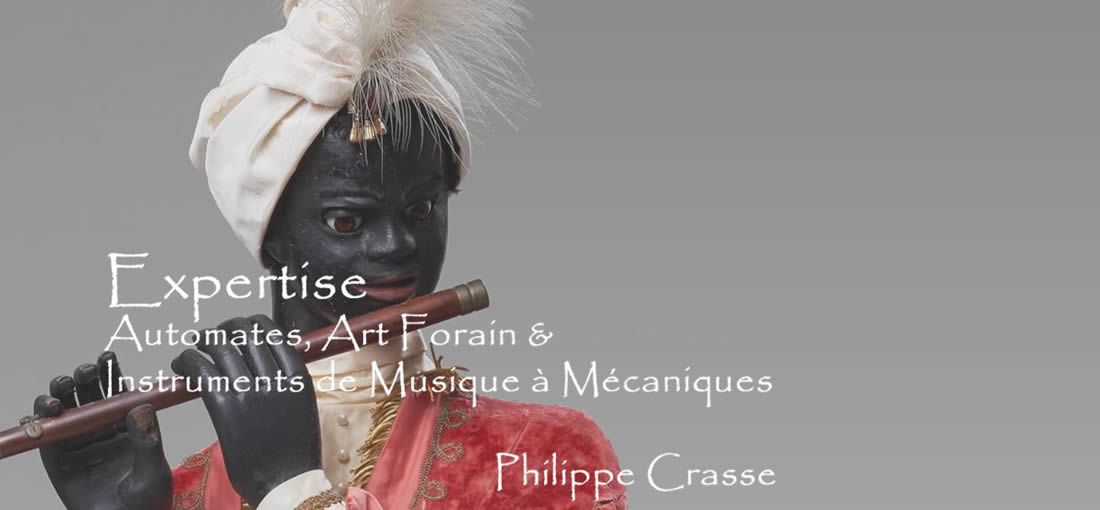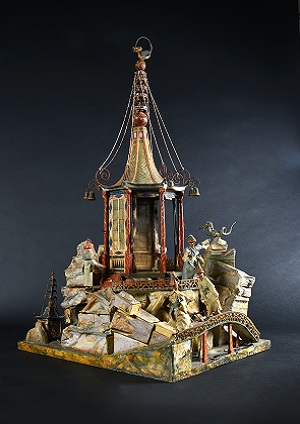Architect Model of a Chinese pavillion
LOT 195 - Architect Model of the Chinese pavillion for the Montmorency-Luxembourg estate
by Pierre Rousseau, architect of the Duke of Montmorency, circa 1770
In the middle of 18th century, Louis XV's France became enthusiastic, like the rest of Europe,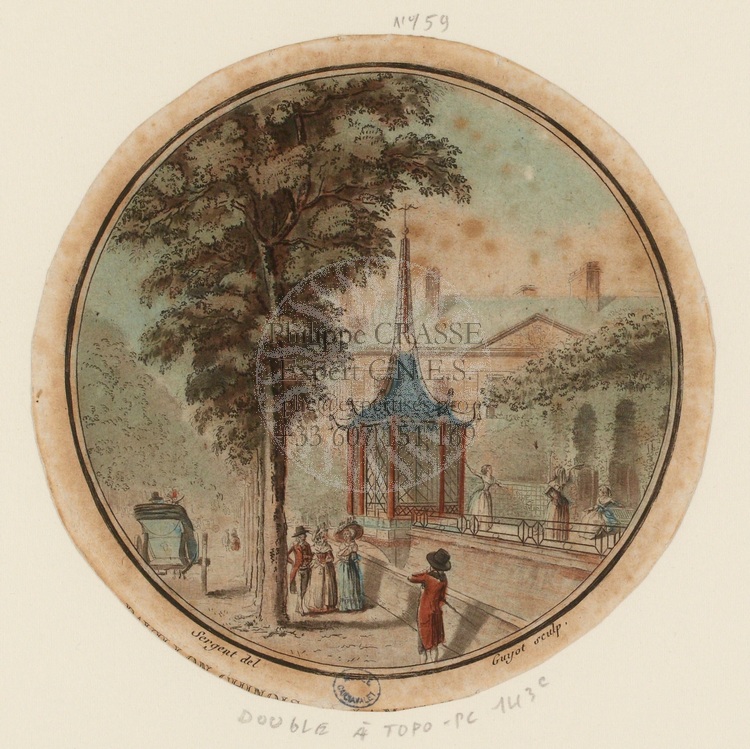 for chinoiseries. Thus, architects, decorators and ornamentalists, freeing themselves from the classicism of the end of Louis XIV’s reign, will draw from exotic stories, the relations of distant embassies and the imports of the French East India Company, a new inspiration to infuse the era with a style as extravagant as it is refined.
for chinoiseries. Thus, architects, decorators and ornamentalists, freeing themselves from the classicism of the end of Louis XIV’s reign, will draw from exotic stories, the relations of distant embassies and the imports of the French East India Company, a new inspiration to infuse the era with a style as extravagant as it is refined.
There are countless antics and other Chinese cabinets decorated with porcelain, nor garden factories, these ephemeral constructions taking up the architectural vocabulary of the Middle Kingdom.
In vogue in European princely mansions, these follies depict a fantasized China in a colorful, light and energetic style, whose success is not demented until the Revolution.
In this way, Anne-Léon de Montmorency-Fosseux, Duke of Montmorency (1731-1799) and his wife Charlotte-Françoise had a fancy pagoda built in the park of their Parisian hotel, which stretched from rue Saint-Marc to the current boulevard Montmartre, by Pierre Rousseau, architect of Hôtel de Salm[1] who had already made some arrangements for them.
Rather than present sketches of this Temple of Serenity, Rousseau had a model of wood and papier-mâché made to stage his architectural choices. Several costumed characters give life to this first concretization of the artistic aim.
Notice: the rockeries are made up of small boxes that we imagine gladly filled with sweetness or preciousness, during the official presentation of the project ...
No doubt the deal was done!
[1] Now known as Palais de la Légion d’Honneur
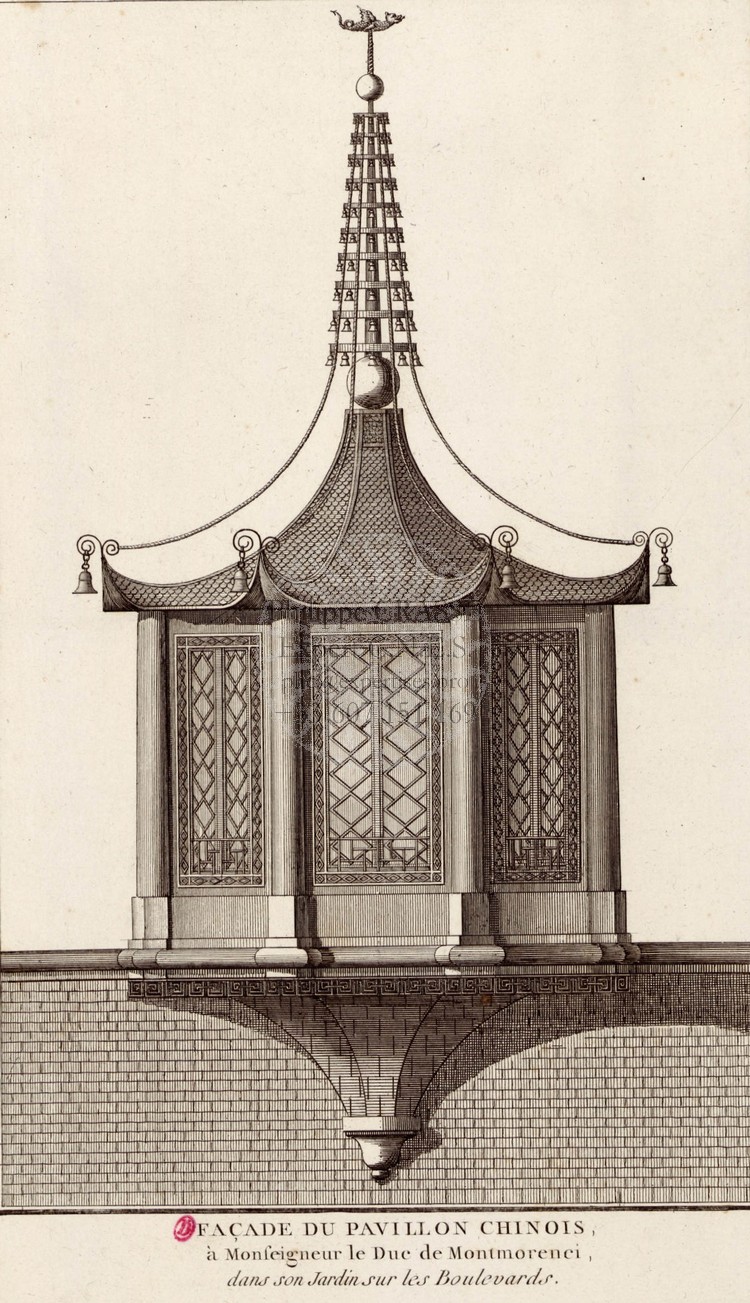 Un kiosque chinois s'élevait également dans le jardin de l'Hôtel de Montmorency-Luxembourg, en bordure du boulevard Montmartre ; cet hôtel, […] avait été construit en 1704, entre la rue Saint-Marc et le Boulevard, par Lassurance, pour Thomas de Rivié, Secrétaire du Roi, qui y eut pour successeurs, d'abord en 1714, le contrôleur des Finances Desmarets, puis en 1728, le duc de Montmorency-Luxembourg ; depuis le commencement du XIXe siècle, cet hôtel a fait place au Passage des Panoramas et au Théâtre des Variétés. Ce pavillon octogonal, à toiture relevée aux angles à la chinoise, était probablement en fer et servait sans doute à lorgner le beau monde défilant sur le boulevard.[1]
Un kiosque chinois s'élevait également dans le jardin de l'Hôtel de Montmorency-Luxembourg, en bordure du boulevard Montmartre ; cet hôtel, […] avait été construit en 1704, entre la rue Saint-Marc et le Boulevard, par Lassurance, pour Thomas de Rivié, Secrétaire du Roi, qui y eut pour successeurs, d'abord en 1714, le contrôleur des Finances Desmarets, puis en 1728, le duc de Montmorency-Luxembourg ; depuis le commencement du XIXe siècle, cet hôtel a fait place au Passage des Panoramas et au Théâtre des Variétés. Ce pavillon octogonal, à toiture relevée aux angles à la chinoise, était probablement en fer et servait sans doute à lorgner le beau monde défilant sur le boulevard.[1]
This pavilion is sufficiently remarkable to be reproduced many times; in Vues pittoresques de Paris[2], n°59 (top part of this page) ; in Voyage pittoresque de la France[3] (engraving from Lallemand - below, in the footer) and in portfolios from Le Rouge Jardins anglo-chinois[4]. (on the left)
But what to think of this model, you might ask?
Is it a presentation model, that Pierre Rousseau, regular supplier of the Montmorency estate would have prepared to describe his project in three dimensions and thus take the market?
But then what about the boxes stacked on top of the other, cleverly replacing the rockeries of a wild environment?
Would it be more of a guessing game?
Hence the presence of these many boxes hiding sweets, but also without a doubt, trinkets, jewelry, and other small pleasures.
The very base of the pagoda, serves as a hiding place for a slightly larger object, which we like to imagine...
[1] Henri Cordier, La Chine en France au XVIIIe siècle, Ed. H. Laurens, Paris 1910, pp. 73 & 74.
[2] Vues pittoresques des principaux édifices de Paris, Ed. Le Campion, aquatints, drawings by Sergent, engravings by Guyot, Musée Carnavalet, Paris, Inv. G.3985.
[3] N° 79, drawings by Lallemand, engragins by Née, Isle de France, Monumens de Paris, in T. III, Estampes, du Voyage pittoresque de la France, published by Société de Gens de Lettre, Imp. de Monsieur, Paris, 1786.
[4] Bibliothèque de l'INHA, coll. Jacques Doucet, Inv. 4 RES 216.
Size
Overall height 850mm - Base 510 x 405 mm
Condition
Good condition; all boxes and dressed characters are here. Some of the banners (percale and paper) obscuring the windows of the folie are damaged.
This email address is being protected from spambots. You need JavaScript enabled to view it.
